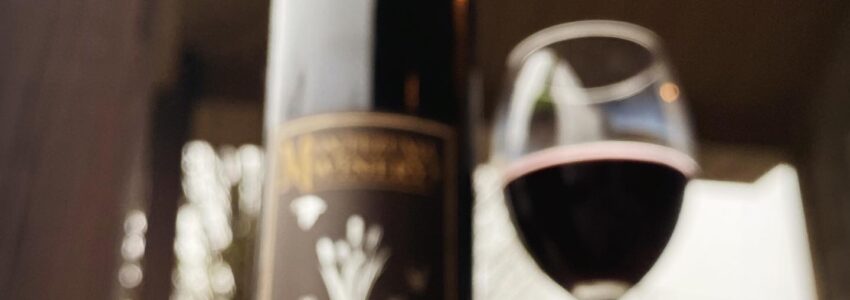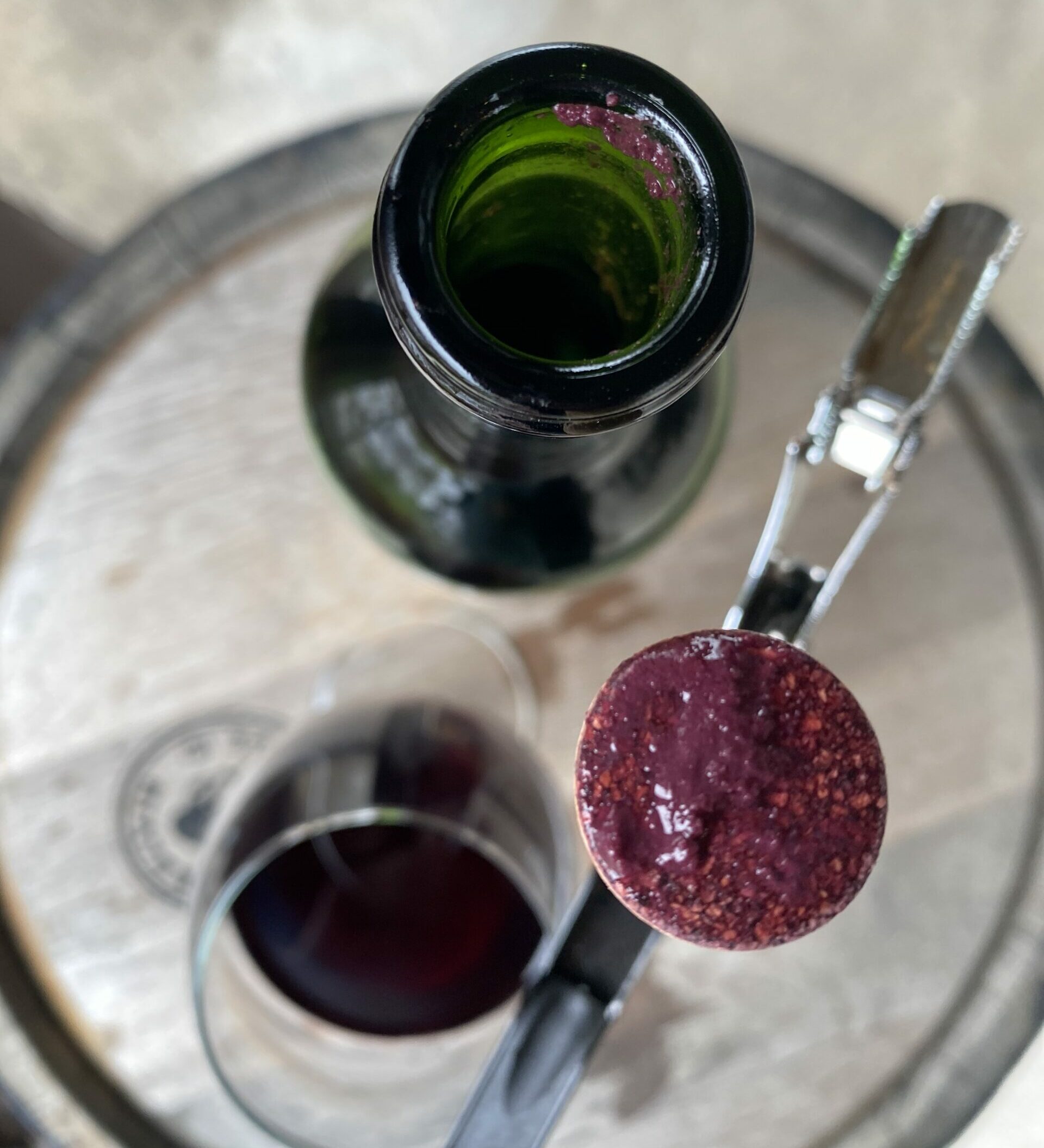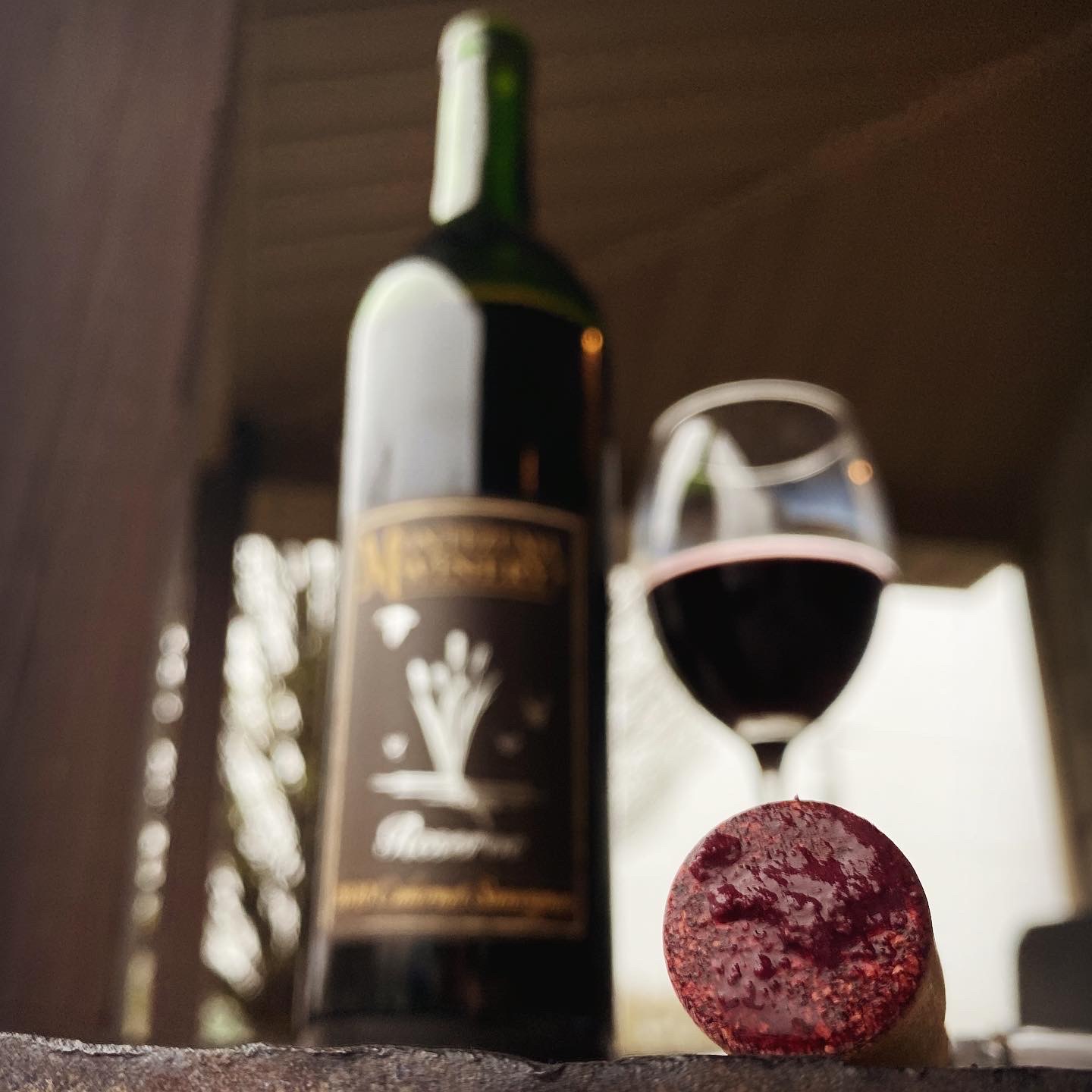I (Sedi)Ment To Do That: Why Some Wines Are Left “Unfined and Unfiltered”

Over the past several years, you may have noticed a trend in some of our new release wines: a little bit of sediment deposited in the bottom of the bottle. Sediment in a bottle of wine can be jarring when you’re not expecting it, and often leads you to wondering whether it’s intentional or reflective of contamination. In these cases, it’s 100% intentional, and indicative of a broader trend being rediscovered by New World winemakers: bottling unfined and unfiltered.
So What are Fining and Filtration, Anyway?
Simply put, fining and filtration are two processes by which unwanted elements, be they chemical or microbial, are removed from a wine. The purposes of each are varied and may include: improving aesthetics, shaping flavor/aroma/texture, and enforcing chemical and microbial stability. Though some wines may benefit from avoiding these processes, there are other wines in our portfolio that wouldn’t look, taste, or smell the same without them. Our move to go without fining and filtration on certain wines is less a value judgment on fining and filtration themselves, but more an attempt to evaluate and shape the production process of each wine individually–assessing each product’s strengths, weaknesses, and potential, and deliberately shaping the production arc to make the best, most interesting wine we possibly can.
Fining in its rudimentary sense is subtraction by addition; a substance is added to wine or juice with the intention of targeting and removing specific chemical compounds, that substance binds to said compounds, and the resulting complex settles to the bottom of the tank, where it can be separated from the finished product. These compounds may affect the flavor, aroma, texture, and ageability of a wine, so fining takes place with an eye toward winemaking style and product trajectory. Fining agents are as varied as the chemical compounds they target, ranging from protein-based substances like skim milk and gelatin to earth-based agents like bentonite. Determining the chemistry of a wine is critical to plotting a course of fining, as parameters like pH, polyphenolic content, and protein load may all have an impact on the efficacy of specific fining agents. In general, fining is used to push timelines–standing in for age and allowing the winemaker to shorten the time period between harvest and drinkability.
Filtration is a separation process with a different sorting mechanism: particle size. Filtration may be employed to improve the clarity and aesthetics of a wine, but it’s most useful when applied to enforce microbial stability. One of the last steps in the process for the vast majority of the wines we produce is a sterile filtration that occurs on the way to the bottling line. The wines are passed through a 0.45 micron absolute filter which removes any spoilage yeast and bacteria from the product before it enters the bottle–hedging our bet against unwanted fermentation. This is particularly critical for wines with some residual sugar, as those wines are most apt to become unintentional Pét-Nat without some sterilization step.
If Fining and Filtration are So Great, Why Avoid Them?
Though fining and filtration are excellent tools for shaping a wine, they’re not as precise as most winemakers would like. Any time you set out to remove something from a wine, you’re going to have some collateral damage in the process: losing some pleasant elements that may have just enough similarity with the unwanted compounds you’re targeting to be picked up by the fining agent or filter. The winemaking process is filled with tough decisions like these: what are you willing to lose and what might you gain by losing it?
Often, the facet of a wine that is most impacted by fining and filtration is texture. Though it’s usually not as sexy as aroma or flavor, texture is, in my opinion, the difference between good wines and great wines. Texture, be it driven by tannin, polysaccharides, alcohol, or sugar, does for a wine what a skeleton does for the human body–it establishes the structure and form of the wine upon which more noticeable elements like aroma and texture are affixed. One of the most common tension points in the process of making wine is finding balance between freshness and richness; in general, these two aims move in opposite directions and decisions are made to emphasize one knowing full well that it means the exclusion of the other. Texture, interestingly enough, is a parameter where richness and freshness are harmonized; fresh fruit usually has richer texture than fruit that is overripe or past its prime. On a personal level, finding this balance via texture has become an artistic bailiwick for me. It’s the thing that I chase the most when I’m making wine and one of the driving forces behind all the outside-the-box experimentation we’ve been doing here over the past few years. Maybe the desire to find harmony between youth and age says something about where my head’s at as I enter middle age, but that’s a conversation for another day.
Ironically enough, shaping texture is one of the key reasons for fining. In this part of the world, it’s not uncommon for grapes to be harvested without reaching full phenolic ripeness, leaving the wine with a rough texture reminiscent of the chalky sensation you experience when eating an underripe banana. Age or no age, these green tannins are difficult to resolve naturally, so sometimes it makes more sense to remove them entirely: enter fining. There are, however, certain vintages (2020 being the most recent) when everything gets fully-ripe; in these cases, taking a little extra time to allow the tannins to develop naturally leads to richly-textured wines that are built to age long term. Fining wines like these prioritizes right now over a few years down the line and robs them of their potential. For wines from stellar vintages like 2020, this feels almost criminal.
Filtration, while not explicitly used for this purpose, may also have a negative effect on texture. Particularly in the case of reds, the textural components of a wine form colloidal complexes, where tannin, anthocyanin, and polysaccharides join up to form velvety, silky mouthfeel. Unfortunately, these complexes sometimes don’t make it through the various rounds of filtration that are typically employed in the production of most modern wines. Most often, filtration is used as a means of averting microbial spoilage, but there are certain wines that are naturally protected against spoilage and may not require filtration to ensure shelf stability. In dry red wines, specifically, there’s often no residual sugar, malic acid, or nitrogen remaining in the wine post-fermentation, meaning that there’s really nothing there for spoilage bugs to eat. Additionally, the microbes present in those wines after aging are often extremely sensitive to sulfite, allowing the winemaker to ward off re-fermentation at relatively low free SO2 levels. For wines that are built and managed in this way, sterile filtration is often more an insurance policy than anything else, but sometimes texture and ageability take precedence over peace of mind.
On the 2020 Dry Reds and Why We Opted to Leave Them Unfined, Unfiltered
When you boil winemaking down to its roots, you discover that it’s just a complicated form of storytelling. Depending on the fruit sources, conditions, and vintage, the role of the winemaker is to tease out the main characters, plot twists, and themes of each wine, making deliberate decisions to advance the story in the best way possible. If the winemaker is doing the job correctly, he or she will not be the main character. As a winemaker gains experience, understanding where the story of a particular wine is going becomes easier, enabling them to make important decisions in the first act (harvest/crush) and laying the groundwork for the story to unravel in subsequent acts.
In the Summer of 2020 as I started to check on vineyards in preparation for harvest, it became obvious to me that vintage conditions were the most important character in the story of that year. A warm, dry harvest season allowed for optimum development of sugars, aromatics, and tannins, and gave us an opportunity to make the sorts of wines that we don’t often get a chance to craft in this part of the world. Tasting the richness and complexity of the fruit on the vines informed my decision making on the crush pad and prompted us to favor full tannic extraction for our dry reds wherever we could. Through barrel aging, we carefully managed oxygen uptake to ensure that these tannin complexes were properly structured and stabilized. We built these wines with the intention of leaving them unfined and unfiltered every step of the way, making careful and timely inputs to push the story along without altering it. The wines responded beautifully, and allowed us to follow through on the goals we’d established before the grapes ever reached our crush pad.
If you drink a bottle of one of our 2020 dry reds, you’ll notice some sediment in the bottom of the bottle. I know it’s not as aesthetically pleasing as a crystal clear wine, but I’m of the opinion that they taste good enough that clarity shouldn’t matter. The 2020 vintage was one where we didn’t have to make many corrective steps; Mother Nature was on our side every step of the way. Those wines are stuffed to the brim with aroma, flavor, and texture, and I felt like we’d be doing them a disservice if we didn’t lay it all out there for the world to experience. They’re layered, lively, rich, and they’re only going to get better with time in the bottle. If the trade off for those attributes is a little bit of sediment, it’s a trade-off I’ll take any time.


